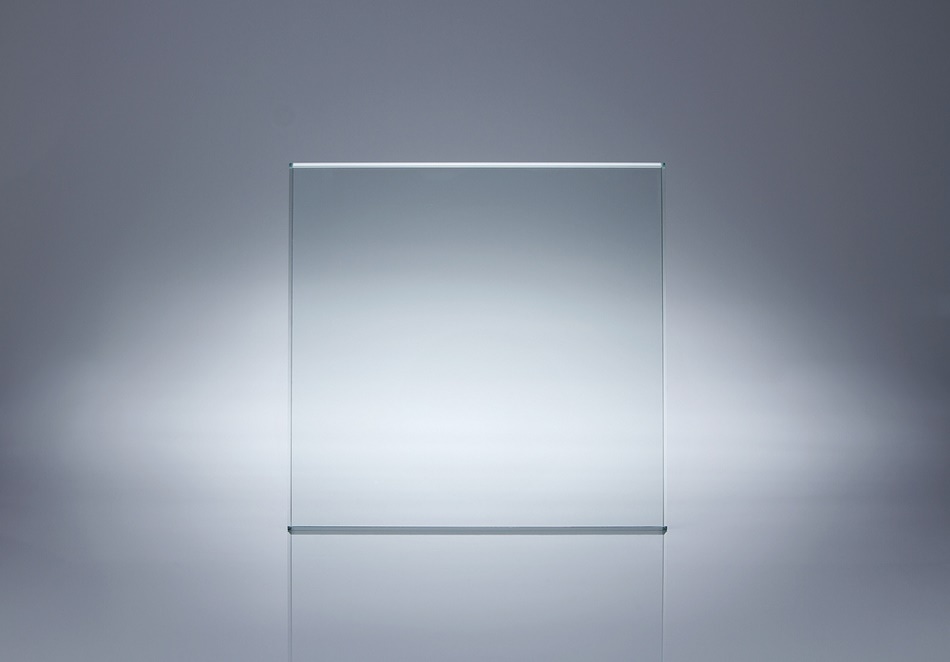Nov 29 2016
 rangizzz/Shutterstock.com
rangizzz/Shutterstock.com
Glass is a curious material that lies in between solid and liquid states of matter, but eventually it always yields to its solid state by settling into the ordered patterns of a crystal. Or so was it thought.
Scientists from the Princeton University have developed a computational model for producing a “perfect glass” that never crystallizes - even at absolute zero. The model is a new way of thinking about glass and details of the extremely unusual properties of a perfect glass are published in Nature Scientific Reports.
We know that if you make anything cold enough it will crystallize, but this is an extremely exotic situation where you’re completely avoiding that.
Salvatore Torquato, Professor of Chemistry, Princeton University
For more than a century, researchers performing experiments on glass have been puzzled by its nature. Although the random arrangement of its molecules suggests it should flow similar to a liquid, it is unyielding and rigid like a solid.
Another unresolved puzzle is the phenomenon of glass transition - the temperature at which cooled liquids transform into a glass. While the transformation of a liquid into a solid is very sharp, for instance, at 0 °C in water, glass can be formed over a wide array of temperatures and only if the liquid is cooled fast enough to prevent crystallization.
When developing their model, the researchers set out to find out whether a glass could exist that could avoid crystallization forever.
Our model is an out-of-the-box possibility.
Salvatore Torquato, Professor of Chemistry, Princeton University
The model stems from two areas in Torquato’s research group that were well suited for a perfect-glass model. The lab focuses on exotic hyperuniform states of matter, materials where atoms appear disordered locally but display long-range order globally that appears in various contexts, including the eye of a chicken.
The other area is maximally random jammed packing in, which is a way of arranging particles in a system so that it has a very high degree of disorder and the particles are jammed together, forever frozen in space.
In the perfect-glass model, “crystals are banished,” Torquato explained. “They could never form by design of the interactions between the particles.”
Previous models to find the perfect glasses only considered 2-body interactions - interactions between particle pairs. In contrast, the Princeton researchers’ model took 2-, 3-, as well as 4-body interactions into account - interactions between the respective numbers of particles.
Although 2-, 3-, and 4-body interactions are more complicated and are yet to be observed in nature, expanding to these interactions enabled the researchers to prevent crystallization, which other models failed to achieve.
In addition to its defining ability to resist crystallization, a perfect glass has the characteristic of zero compressibility, which means that it is unaffected by outside forces and can also exceptionally propagate sound.
According to Ge Zhang, lead author of the study and a graduate student in the Torquato lab, sound can travel at the speed of light through a perfect glass. Zhang and Torquato worked with coauthor Frank Stillinger, who is a senior chemist in Princeton’s Department of Chemistry.
The model also offers a solution to a paradox that has puzzled scientists for decades and was first explained in 1948 at Princeton by the late chemistry professor Walter Kauzmann. The Kauzmann paradox considered the “entropy crisis” formed as a result of supercooling of a glass-forming liquid above a specific temperature.
Entropy is a measure of disorder, indicating that a free-flowing liquid is highly disordered, and hence entropy, when compared to highly structured crystal. However, once the liquid is cooled, the difference in entropy between the crystal and the liquid starts decreasing.
Kauzmann proposed that if the same tendency occurred at low enough temperatures, eventually there would be a temperature now known as the the Kauzmann temperature, beyond which the entropy or disorder, of the crystal becomes greater than that of the supercooled liquid - a paradoxical condition.
However, the perfect-glass model completely bypasses this paradox. As the glass cannot crystallize, there is no crystalline entropy with which the liquid entropy can be compared, and hence there is no risk of an entropy crisis.
Normand Mousseau, physics professor at the University of Montreal, stated that the Princeton researchers followed an unconventional approach to answering an old question: “At low temperatures, can the most stable structure be something that is a glass? Can that exist in the universe?”
Although their model does not answer such questions completely, it offers more information, stated Mousseau, who had a good knowledge of the research but did not play any part in it. “Having a new way to look at this problem clearly helps us to move forward,” he said.
At present, the perfect-glass model is only a theoretical proof of concept, although it is a fascinating model defying the present knowledge about glass. Although Torquato suggested that polymer systems can prove helpful, the real-time formation of the model might take a longer time. He further added that there is more research needed to understand the theory of perfect glasses.
The paper, "The Perfect Glass Paradigm: Disordered Hyperuniform Glasses Down to Absolute Zero," was featured in the Nov. 28 issue of Nature Scientific Reports. The work was funded by the National Science Foundation under Grant No. DMS-1211087.
"Perfect Glass"
Princeton University researchers have developed a computational model for creating a "perfect glass" that never crystallizes — even at absolute zero. The molecular structure of a glass suggests it should have liquid properties, yet it behaves with the rigidity of a solid. The researchers expanded beyond the typical 2-body interactions — which refer to the interaction between molecules — to consider 2-, 3- and 4-body interactions. The simulation above depicts a collection of particles (red) being cooled rapidly to 0 degrees Kelvin (absolute zero). The researchers were able to suppress crystallization at absolute zero so that the final state shown is a perfect glass. (Video by Ge Zhang, Department of Chemistry)